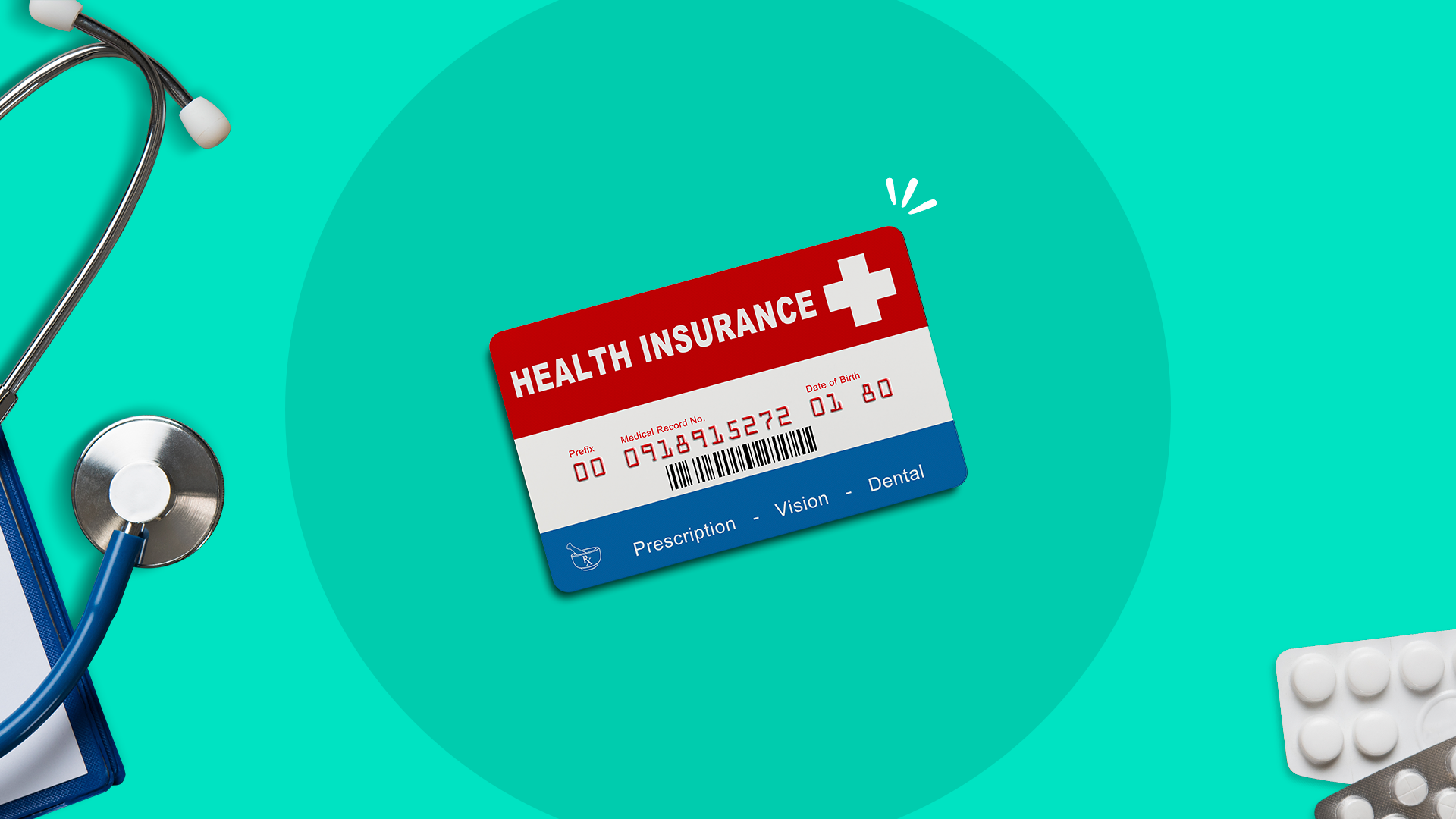

Featured
How To Reduce Health Care Costs
Modified: January 2, 2024
Discover effective strategies to reduce health care costs and save money. Read our featured guide for practical tips and expert advice.
Introduction
As health care costs continue to rise, finding ways to reduce these expenses has become a top priority for many individuals and families. The increasing costs can be overwhelming and often restrict access to necessary medical care. However, there are strategies and techniques that can help mitigate the financial burden of health care while still maintaining quality care.
Understanding the factors that contribute to high health care costs is the first step in finding effective solutions. Factors such as the rising cost of medical procedures, expensive prescription medications, and frequent hospitalizations all contribute to the increasing burden on individuals and the healthcare system as a whole. In this article, we will explore various tips and strategies that can help individuals reduce their health care costs without compromising the quality of care they receive.
Prevention is key when it comes to managing health care costs. By adopting a healthy lifestyle and prioritizing preventive care, individuals can significantly reduce their chances of developing chronic conditions that require extensive medical intervention. Regular exercise, a balanced diet, and routine check-ups can help identify and address health issues early on, potentially avoiding more costly treatments down the line.
Another essential aspect of managing health care costs is optimizing health insurance coverage. Understanding the details of your insurance plan, including deductibles, copayments, and network providers, can help you make informed decisions and avoid unnecessary out-of-pocket expenses. Taking advantage of preventive care services that are covered at no cost can also help save money in the long run.
Prescription medications can often be a significant source of financial strain. However, there are various strategies to save on prescription costs, such as utilizing generic alternatives, exploring patient assistance programs, or considering mail-order pharmacies. Being proactive in discussing medication options with healthcare providers can help identify cost-effective solutions without compromising efficacy.
While traditional healthcare options can be costly, exploring alternative options can offer more affordable alternatives. This may include seeking care through community health clinics, utilizing telemedicine services, or considering holistic approaches to managing health conditions. These alternatives can provide cost savings while still ensuring adequate care and treatment.
In addition to seeking cost-effective care, understanding health care billing and negotiation can also help individuals reduce expenses. Reviewing medical bills for errors or overcharges and negotiating with healthcare providers or insurance companies can often result in significant savings. Being diligent in understanding medical billing codes and advocating for oneself can lead to reduced costs and fairer financial arrangements.
Many individuals are unaware of the various health care discounts and benefits that are available to them. From employer-sponsored wellness programs to government assistance programs, taking advantage of these resources can help reduce out-of-pocket expenses and provide access to discounted services. Researching and utilizing these opportunities can lead to substantial savings.
Managing chronic conditions is often a long-term and costly endeavor. However, taking proactive steps to manage these conditions, such as adhering to treatment plans, following medication regimens, and seeking regular check-ups, can help minimize complications and potentially reduce medical expenses. It is crucial to work closely with healthcare providers to develop comprehensive management strategies that prioritize both health outcomes and financial considerations.
Finally, promoting transparency in health care costs and actively comparing prices and services can be instrumental in reducing expenses. Understanding the prices of procedures, tests, and treatments and seeking out more affordable options can lead to substantial savings. Online resources and healthcare cost transparency tools can help individuals make more informed decisions and avoid unnecessary overcharges.
By implementing these strategies and techniques, individuals can take control of their health care costs and work towards more financially sustainable healthcare practices. With a combination of preventive care, effective insurance utilization, negotiation, and proactive management of health conditions, individuals can reduce their healthcare expenses while maintaining access to necessary care and treatment. Through careful planning and informed decision-making, the burden of health care costs can be alleviated, providing individuals and families with peace of mind and financial stability.
Understanding the Factors Affecting Health Care Costs
The rising cost of healthcare is a complex issue influenced by various factors that contribute to the increasing burden on individuals, families, and the overall healthcare system. Understanding these factors is crucial in finding effective solutions to reduce healthcare costs without compromising the quality of care received.
One of the primary contributors to escalating healthcare costs is the rising cost of medical procedures. Advances in medical technology and the development of new treatments and medications often come with hefty price tags. Additionally, the cost of healthcare administration, including insurance processing and billing, adds to the overall expenses. These increased costs are passed on to patients, leading to higher healthcare bills.
Another significant factor is the cost of prescription medications. Pharmaceutical companies invest heavily in research and development, which drives up the cost of new medications. In some cases, brand-name medications can be prohibitively expensive, causing financial strain for patients who require long-term or specialized treatments. The lack of generic alternatives or the availability of affordable alternatives also contribute to the high cost of medications.
Hospitalizations and emergency room visits are also noteworthy contributors to rising healthcare costs. Emergency care is often the most expensive form of treatment due to the need for specialized personnel and equipment. Unnecessary emergency room visits and hospitalizations can strain both the patient’s finances and the healthcare system. Addressing the root causes of these visits and exploring alternative care options can help alleviate the financial burden.
The prevalence of chronic conditions has also played a significant role in the increasing healthcare costs. Conditions such as diabetes, heart disease, and cancer require ongoing medical attention, including regular doctor visits, diagnostic tests, and medication management. Treating these conditions can be expensive, especially for individuals without adequate insurance coverage. The long-term nature of chronic conditions makes them a substantial financial burden for both patients and healthcare providers.
Moreover, administrative costs associated with healthcare, such as billing, insurance processing, and paperwork, contribute to the overall cost of care. The complexity of the healthcare system, with multiple insurance plans, varying coverage policies, and differing reimbursement rates, adds to the administrative expenses. Simplifying administrative processes and reducing bureaucratic red tape can help lower healthcare costs and improve efficiency.
Factors such as medical malpractice lawsuits and defensive medicine practices also impact healthcare costs. Physicians may order unnecessary tests or procedures to protect themselves from potential legal repercussions. These defensive practices contribute to the overall cost of healthcare without necessarily improving patient outcomes. Implementing measures to address medical malpractice concerns while still ensuring patient safety and quality care can help reduce healthcare costs.
Understanding the factors driving healthcare costs is essential in developing strategies to mitigate the financial burden for individuals and families. By addressing the high cost of medical procedures, exploring alternative care options, promoting access to affordable medications, and simplifying administrative processes, it is possible to reduce healthcare costs while maintaining quality care. Initiatives that prioritize preventive care, promote transparency in pricing, and encourage collaboration between medical professionals and patients can pave the way towards more sustainable and affordable healthcare.
Tips for Preventive Care and Healthy Lifestyle
One effective way to reduce healthcare costs is by prioritizing preventive care and adopting a healthy lifestyle. By taking proactive measures to prevent illness and maintain overall well-being, individuals can minimize the need for costly medical interventions. Here are some tips for preventive care and maintaining a healthy lifestyle:
- Annual Check-ups: Schedule regular visits with your primary care physician for preventive screenings and vaccinations. These check-ups can help identify and address health issues early on, potentially avoiding more expensive treatments later. Keep track of recommended screenings and maintain a health journal for reference.
- Healthy Diet: Follow a balanced diet rich in fruits, vegetables, whole grains, and lean proteins. Limit the intake of processed foods, sugary beverages, and unhealthy snacks. A healthy diet can help prevent chronic diseases, such as obesity, diabetes, and heart disease, reducing the need for costly medical interventions.
- Regular Exercise: Engage in regular physical activity to maintain a healthy weight, strengthen muscles, and improve cardiovascular health. Aim for at least 150 minutes of moderate-intensity aerobic exercise or 75 minutes of vigorous-intensity exercise per week. Incorporate activities that you enjoy to make exercise a part of your daily routine.
- Manage Stress: Stress can have a negative impact on both physical and mental health. Find healthy ways to manage stress, such as practicing mindfulness meditation, engaging in hobbies, or seeking support from loved ones. Chronic stress can lead to various health conditions, so it’s important to prioritize self-care and stress reduction techniques.
- Avoid Harmful Habits: Quit smoking and limit alcohol consumption to maintain optimal health. Smoking is a leading cause of preventable diseases, including cancer, heart disease, and respiratory conditions. Excessive alcohol intake can lead to liver damage, addiction, and other health problems. Taking steps to quit smoking and drinking in moderation can significantly improve overall health.
- Practice Good Hygiene: Wash hands frequently to prevent the spread of infections. Proper hand hygiene can help reduce the risk of contracting illnesses, such as colds, flu, and gastrointestinal infections. Also, maintain good oral hygiene by brushing and flossing regularly to prevent dental problems that can lead to expensive treatments.
- Stay Immunized: Keep up with recommended vaccinations to ensure protection against preventable diseases. Vaccinations not only safeguard your health but also help prevent the spread of infectious diseases within the community. Check with your healthcare provider to stay up-to-date with the necessary vaccines throughout your lifespan.
- Get Sufficient Sleep: Prioritize getting enough sleep to support overall health and well-being. Lack of sleep can weaken the immune system, increase the risk of chronic conditions, and impair cognitive function. Aim for 7-8 hours of quality sleep each night to promote optimal health.
By incorporating these tips into your lifestyle, you can prioritize preventive care and reduce the likelihood of developing chronic conditions. Healthy habits not only improve your quality of life but can also lead to significant savings on healthcare expenses in the long run.
Utilizing Health Insurance Effectively
Health insurance plays a crucial role in managing healthcare costs. Understanding the details of your insurance coverage and utilizing it effectively can help you save money and receive the necessary care. Here are some tips for utilizing health insurance effectively:
- Review Your Policy: Familiarize yourself with the terms, coverage limits, and exclusions of your health insurance policy. Understand the various components, such as deductibles, copayments, and out-of-pocket maximums. This knowledge will guide your decisions and help you make the most of your coverage.
- Choose In-Network Providers: When seeking medical care, choose healthcare providers that are in-network with your insurance plan. In-network providers have negotiated rates with the insurance company, resulting in lower out-of-pocket costs for you. Before scheduling appointments or procedures, confirm if the provider is in-network to avoid unexpected expenses.
- Take Advantage of Preventive Services: Many insurance plans offer free preventive care services, such as vaccinations, screenings, and annual check-ups. Utilize these services to detect and address health issues early on, potentially avoiding more extensive and costly treatments in the future.
- Understand Referrals and Prior Authorizations: Some insurance plans require referrals from your primary care physician or prior authorizations for certain procedures or medications. Familiarize yourself with these requirements to ensure coverage and avoid unexpected denials or out-of-pocket expenses.
- Optimize Prescription Drug Benefits: Review your insurance plan’s prescription drug formulary to understand which medications are covered and at what cost. Whenever possible, opt for generic alternatives, as they tend to be more affordable. If you require costly medications, explore patient assistance programs or consider mail-order pharmacies for potential savings.
- Appeal Denied Claims: If a claim is denied by your insurance company, don’t hesitate to appeal the decision. Mistakes and misunderstandings can occur, and appealing the denial may result in the claim being reconsidered and approved. Keep records of all communication and documentation related to the claim.
- Utilize Telemedicine: Telemedicine services allow you to consult with healthcare professionals remotely, often at a lower cost than in-person visits. Take advantage of telemedicine for non-emergency consultations, follow-ups, or minor health concerns. Check if your insurance plan covers telemedicine services and explore the available options.
- Keep Track of Medical Expenses: Maintain organized records of medical bills, explanations of benefits (EOBs), and receipts. Review these documents for accuracy and check for any potential billing errors or overcharges. Being aware of your expenses can help you manage your healthcare costs effectively.
- Ask for Cost Estimates: Before undergoing procedures or tests, request cost estimates from healthcare providers. This can help you compare prices and understand the potential financial impact. Don’t hesitate to ask about less costly alternatives or potential discounts.
- Stay Informed: Stay up-to-date with any changes or updates to your health insurance coverage. Understand any new policies, additions, or modifications to your plan. Regularly review your benefits to ensure you are making the most of your insurance coverage.
By utilizing your health insurance effectively, you can maximize your coverage and minimize out-of-pocket expenses. Understanding your policy, choosing in-network providers, taking advantage of preventive services, and optimizing prescription drug benefits are just a few ways to make the most of your health insurance coverage. By actively managing and staying informed about your health insurance, you can effectively navigate the healthcare system and reduce healthcare costs.
Strategies for Saving on Prescription Medications
Prescription medications can often be a significant portion of healthcare costs, especially for individuals with chronic conditions or complex treatment regimens. However, there are several strategies that can help you save money on prescription medications without compromising your health or the quality of care you receive. Here are some strategies to consider:
- Utilize Generic Alternatives: Generic medications are equally effective as brand-name drugs but typically cost significantly less. When available, ask your healthcare provider or pharmacist if a generic alternative is available for your prescribed medication.
- Compare Prices: Prices for prescription medications can vary significantly between pharmacies. Take the time to compare prices at different pharmacies or online platforms. Some websites and apps also provide tools that allow you to compare prices and find the most affordable options.
- Explore Prescription Assistance Programs: Many pharmaceutical companies offer patient assistance programs that provide free or discounted medications to individuals without insurance or those experiencing financial hardship. Research whether the medications you need have any assistance programs available.
- Consider Mail-Order Pharmacies: Mail-order pharmacies can often provide medications at lower prices than brick-and-mortar pharmacies. Check if your health insurance plan offers mail-order pharmacy options, as they can offer convenience and potential cost savings.
- Ask for Prescription Coupons or Discounts: Some pharmaceutical companies offer coupons or patient assistance cards that can significantly reduce the cost of medications. Ask your healthcare provider or pharmacist if any coupons or discounts are available for the medications you are prescribed.
- Request 90-Day Supplies: If you take chronic medications, consider asking your healthcare provider to prescribe a 90-day supply instead of a one-month supply. Many pharmacies offer discounted pricing for a 90-day supply, which can result in significant savings over time.
- Consider Therapeutic Substitution: In consultation with your healthcare provider, explore whether there are therapeutic alternatives or similar medications that may be equally effective but more affordable. This strategy may require a discussion with your healthcare provider to evaluate the options available.
- Ask About Pharmacy Discount Programs: Some pharmacies offer discount programs or loyalty cards that can provide savings on prescription medications. Inquire at your local pharmacy if they have any discount programs available, and consider signing up to take advantage of potential savings.
- Discuss Medication Options with Your Healthcare Provider: Openly discuss medication costs and possible alternatives with your healthcare provider. They may be able to prescribe more cost-effective medications or suggest alternative treatment approaches that can help reduce costs while maintaining your health.
- Review your Health Insurance Formulary: Check your health insurance plan’s drug formulary to understand which medications are covered and at what cost. Formularies often classify drugs into different tiers, with lower-tier medications having lower copays or coinsurance. By understanding your formulary, you can make informed decisions about which medications are most cost-effective.
By implementing these strategies, you can take steps to save money on prescription medications. Utilizing generic alternatives, comparing prices, exploring patient assistance programs, considering mail-order pharmacies, and discussing medication options with your healthcare provider are all effective ways to reduce the cost of prescription medications. Remember to always consult with your healthcare provider before making any changes to your medication regimen.
Exploring Alternative Health Care Options
When it comes to managing healthcare costs, exploring alternative health care options can provide affordable alternatives while still ensuring adequate care and treatment. These options can range from community clinics to telemedicine services, offering accessible and cost-effective healthcare solutions. Here are some alternative health care options worth considering:
- Community Health Clinics: Community health clinics are often available in many communities and provide primary medical care at reduced costs. These clinics offer a range of services, including preventive care, screenings, vaccinations, and basic medical treatments. They may also have sliding-scale payment options based on income.
- Telemedicine Services: Telemedicine services utilize technology to provide remote healthcare consultations with healthcare professionals. These services can be more affordable than in-person visits and offer convenience, particularly for non-emergency consultations, follow-ups, or minor health concerns. Many insurance plans now include coverage for telemedicine services.
- Urgent Care Centers: Urgent care centers can provide prompt medical care for non-life-threatening conditions, such as minor injuries, infections, or illnesses. These centers often have more affordable pricing compared to emergency room visits and can provide convenient access to timely care without the high costs associated with emergency room care.
- Holistic and Alternative Medicine: Incorporating holistic practices and alternative medicine approaches can provide alternative avenues for managing health conditions. These practices may include acupuncture, chiropractic care, naturopathy, or herbal remedies. While these treatments may not be covered by insurance, they can often provide cost-effective options for certain conditions.
- Non-Profit Organizations: Some non-profit organizations provide healthcare services or programs geared towards specific populations or conditions. These organizations may offer discounted or free medical services, medication assistance, or support programs. Research local non-profit organizations to see if they offer any relevant healthcare services.
- Health Savings Accounts (HSAs) and Flexible Spending Accounts (FSAs): HSAs and FSAs are financial accounts designed to help individuals save money for healthcare expenses. These accounts often have tax advantages and can be used for eligible healthcare expenses, including alternative health care treatments. Consult with a financial advisor or your employer’s benefits coordinator to understand these options.
- Participate in Clinical Trials: Clinical trials can offer access to cutting-edge treatments and medications at reduced costs or even for free. By participating in clinical trials, individuals can access potentially life-saving treatments while contributing to medical research. Research clinical trial opportunities in your area or consult with your healthcare provider about potential options.
- Discounted Health Programs: Some organizations offer discounted health programs that provide access to medical services, prescriptions, vision, and dental care at reduced rates. These programs often require a membership fee but can provide significant savings for individuals and families. Research different programs available and compare their offerings and costs.
Exploring alternative health care options can help individuals access affordable care without compromising their health or well-being. Community health clinics, telemedicine services, urgent care centers, and holistic and alternative medicine approaches can provide cost-effective alternatives. In addition, taking advantage of non-profit organizations, utilizing HSAs and FSAs, participating in clinical trials, and considering discounted health programs are strategies that can further reduce healthcare costs. It is important to research and evaluate these options to determine which alternative health care approaches may be most suitable for your needs.
Understanding Health Care Billing and Negotiation
Understanding health care billing processes and learning to negotiate can play a significant role in reducing healthcare costs. Medical bills can be complex and confusing, but being knowledgeable about the billing system and advocating for yourself can help you navigate the process more effectively. Here are some key aspects to understand about health care billing and strategies for negotiation:
- Review Your Medical Bills: Carefully review all medical bills you receive for accuracy and completeness. Check for any errors, duplicate charges, or services you did not receive. If you notice any discrepancies, contact the healthcare provider or billing department to rectify the issue.
- Understand Your Health Insurance Coverage: Familiarize yourself with your health insurance coverage, including deductibles, copayments, and coinsurance rates. Know the procedures and services that are covered, as well as any limitations or exclusions. This knowledge will help you determine if you are being billed correctly and whether you may have grounds for negotiation.
- Keep Detailed Records: Maintain organized records of all medical bills, insurance claims, and related documents. This includes explanations of benefits (EOBs), receipts, and correspondence with healthcare providers or insurance companies. Having a clear record will help you track expenses and provide evidence during negotiation processes.
- Ask for Itemized Bills: Request itemized bills from healthcare providers, which provide a detailed breakdown of all services and charges. This will allow you to better understand the charges and identify any potential errors or inflated fees. With itemized bills, you can more effectively negotiate and dispute any disputed charges.
- Check for Eligible Discounts and Assistance Programs: Inquire with healthcare providers or insurance companies about available discounts or assistance programs. Some providers offer discounts for self-pay patients or have financial assistance programs for individuals with financial hardship. Research and determine whether you qualify for any such programs.
- Negotiate with Providers: If facing high medical bills or financial hardship, consider negotiating with healthcare providers. Contact the billing department or financial assistance office and explain your situation. Discuss the possibility of reducing or negotiating fees, setting up a payment plan, or applying for financial aid. Many providers are open to discussion and willing to work with patients to find mutually beneficial solutions.
- Appeal Denied Claims: If an insurance claim is denied, promptly appeal the decision. Many claims are denied initially due to errors or misunderstandings. Follow the appeals process outlined by your insurance company, provide any necessary documentation or supporting information, and be persistent in advocating for coverage.
- Seek Professional Assistance: If you are overwhelmed or facing particularly complex or significant medical bills, consider seeking assistance from a medical billing advocate or a professional medical bill review service. These professionals have expertise in navigating billing systems, negotiating with healthcare providers and insurance companies, and can potentially uncover cost-saving opportunities.
By understanding health care billing processes and developing effective negotiation skills, individuals can have better control over their healthcare costs. Reviewing bills, understanding insurance coverage, keeping detailed records, and exploring discounts or assistance programs are steps that can lead to potential savings. Additionally, negotiating with healthcare providers and appealing denied claims can also result in financial relief. When necessary, seeking professional assistance can further enhance your ability to navigate complex billing situations. Taking an active role in managing health care bills and advocating for fair and accurate charges can help minimize healthcare costs while ensuring you receive the care and services you need.
Taking Advantage of Health Care Discounts and Benefits
When it comes to managing healthcare costs, taking advantage of available discounts and benefits can significantly reduce out-of-pocket expenses. Many individuals are unaware of the various programs and resources that can help them access more affordable healthcare services. Here are some tips on how to take advantage of health care discounts and benefits:
- Employer-Sponsored Wellness Programs: Check if your employer offers any wellness programs or employee benefits that incentivize healthy behaviors. These programs may include gym membership discounts, smoking cessation programs, or financial incentives for reaching certain health goals. Taking advantage of these programs can provide cost savings and promote overall well-being.
- Government Assistance Programs: Research the available government assistance programs that can help individuals and families access healthcare services at reduced costs. Programs such as Medicaid, Medicare, and the Children’s Health Insurance Program (CHIP) provide coverage for eligible populations. Check if you qualify for any of these programs and enroll accordingly.
- Prescription Drug Discount Cards: Many pharmacies and prescription drug companies offer discount cards or programs that can significantly reduce the cost of prescription medications. These cards can be obtained online or at the pharmacy, and they should be presented every time you fill a prescription to receive the discounted price.
- Flexible Spending Accounts (FSAs) and Health Savings Accounts (HSAs): If your employer offers FSAs or HSAs, take advantage of these accounts to set aside pre-tax dollars for medical expenses. These accounts can be used for various healthcare-related expenses, including copayments, deductibles, and certain over-the-counter products. Utilizing these accounts can provide additional tax savings on top of reducing your out-of-pocket expenses.
- Utilize Preventive Care Services: Many health insurance plans offer free preventive care services, such as vaccinations, screenings, and annual check-ups. Taking advantage of these services not only ensures your well-being but can also help detect potential health issues early on, potentially avoiding more costly treatments in the future.
- Patient Assistance Programs: Pharmaceutical companies often have patient assistance programs that provide free or discounted medications to individuals who meet specific eligibility criteria. These programs are designed to help individuals with financial hardships access necessary medications. Research whether the medications you need have any patient assistance programs available.
- Discounted Health Services: Some healthcare providers offer discounted rates for self-pay patients or patients without insurance. Inquire with local clinics, hospitals, or specialists to see if they have any discounted services or payment plans available. These options can provide significant savings for individuals without insurance coverage.
- Dental and Vision Discount Programs: Dental and vision care can be expensive, especially for individuals without insurance coverage. Look for dental and vision discount programs that offer reduced rates on services, eyewear, or dental procedures. These programs can help make essential healthcare services more affordable.
- Membership Programs: Some membership programs, such as health clubs, professional organizations, or even warehouse clubs, offer additional health-related benefits and discounts. Explore the perks and benefits of any memberships you have to see if they provide any cost savings on healthcare services or products.
- Research Health Insurances Options: If you don’t have health insurance coverage or are considering switching plans, research different insurance options to find the one that offers the most comprehensive coverage at the most affordable cost. Compare plans, review network providers, and explore available benefits and discounts.
By taking advantage of health care discounts and benefits, individuals can significantly reduce their out-of-pocket healthcare expenses. Employer-sponsored wellness programs, government assistance programs, prescription drug discount cards, and flexible spending accounts are just a few options to explore. Additionally, utilizing preventive care services, patient assistance programs, discounted health services, and dental and vision discount programs can further contribute to savings. Researching and taking advantage of the available resources can help individuals access more affordable healthcare without compromising quality or necessary care.
Managing Chronic Conditions to Reduce Costs
Managing chronic conditions is essential for maintaining health and quality of life. However, the long-term nature of these conditions can also lead to increased healthcare costs. By taking proactive steps to manage chronic conditions effectively, individuals can reduce the financial burden associated with ongoing medical care. Here are some strategies for managing chronic conditions and minimizing costs:
- Adhere to Treatment Plans: Follow your healthcare provider’s recommended treatment plan consistently. This includes taking medications as prescribed, attending regular check-ups, and following any dietary or lifestyle modifications. Adhering to the treatment plan can help prevent complications and the need for costly interventions.
- Communicate with Your Healthcare Provider: Maintain open and regular communication with your healthcare provider. Discuss any concerns or challenges you may be facing in managing your chronic condition. They can provide guidance, adjustments to your treatment plan if necessary, or offer suggestions to help you optimize your health while minimizing costs.
- Explore Generic Medications: If you require medications for your chronic condition, inquire with your healthcare provider about the availability of generic alternatives. Generic medications are often significantly cheaper than brand-name drugs while providing the same therapeutic benefits.
- Utilize Prescription Assistance Programs: Some pharmaceutical companies offer prescription assistance programs for individuals who cannot afford their medications. Research whether the medications you need have any patient assistance programs available. These programs can provide free or discounted medications, reducing the financial strain of managing your chronic condition.
- Optimize Your Health Insurance Coverage: Understand your health insurance plan and its coverage for managing chronic conditions. Take advantage of preventive care services, such as regular check-ups and screenings, that are often covered at no additional cost. Ensure that your insurance plan covers the necessary medications, treatments, and specialists you require for managing your chronic condition.
- Manage Lifestyle Factors: Make healthy lifestyle choices that can positively impact your chronic condition and decrease healthcare costs. This includes following a nutritious diet, engaging in regular physical activity, managing stress, getting sufficient sleep, and avoiding harmful habits such as smoking or excessive alcohol consumption.
- Seek Community Support and Resources: Connect with local support groups or organizations that focus on your specific chronic condition. These groups can provide emotional support, valuable resources, and information on managing your condition effectively. They may also offer educational workshops or events that can help you better understand your chronic condition and its management.
- Take Advantage of Telemedicine: Telemedicine services can provide convenient and cost-effective ways to monitor and manage chronic conditions. Regular virtual check-ins with your healthcare provider can help identify any potential issues early on, minimizing the need for urgent or costly interventions. Check if your insurance covers telemedicine services or inquire about any potential out-of-pocket costs.
- Consider Prevention and Self-Management Programs: Many healthcare organizations offer prevention and self-management programs for chronic conditions. These programs provide education, resources, and strategies for effectively managing your condition at home. By actively participating in these programs, you can gain the knowledge and skills to self-manage your condition, potentially reducing the need for frequent medical interventions.
- Take Advantage of Free or Low-Cost Screenings: Attend community screenings or health fairs that offer free or low-cost screenings relevant to your chronic condition. Early detection of potential complications or changes in your condition can lead to timely interventions, preventing more serious health issues and reducing overall healthcare costs.
By proactively managing chronic conditions, individuals can reduce healthcare costs while maintaining optimal health. Adhering to treatment plans, exploring generic medications, utilizing prescription assistance programs, and optimizing health insurance coverage are key strategies. Additionally, focusing on maintaining a healthy lifestyle, seeking community support, and taking advantage of telemedicine services can further contribute to cost reduction. By actively participating in prevention and self-management programs and attending free or low-cost screenings, individuals can detect potential complications early on, reducing the need for costly interventions. With proper management and self-care, individuals can effectively manage their chronic conditions while minimizing the financial impact.
Promoting Transparency and Comparison Shopping
In the quest to reduce healthcare costs, promoting transparency in pricing and engaging in comparison shopping can be powerful tools. By seeking out information, comparing prices, and making informed decisions, individuals can gain more control over their healthcare expenses. Here are some strategies for promoting transparency and engaging in comparison shopping for healthcare services:
- Research Procedure and Treatment Costs: Before undergoing a medical procedure or treatment, research the average costs associated with it. Various online resources and databases provide estimates for the cost of specific procedures. Understanding the potential costs will help you make more informed choices and identify any potential discrepancies in pricing.
- Inquire About the Total Cost: When seeking healthcare services, make sure to ask about the total cost, including any facility fees, physician fees, and additional charges. This will give you a comprehensive understanding of the financial obligation associated with the service.
- Shop Around for Lower Prices: Don’t hesitate to compare prices at different healthcare facilities or providers. Prices for the same service can vary significantly, so it’s essential to explore your options and choose the most cost-effective provider.
- Look for Quality and Value: When comparing prices, it’s important to consider the value and quality of the healthcare service as well. Price should not be the sole determining factor; ensure that the provider offers quality care and has a good reputation.
- Explore Out-of-Network Options: If your insurance plan allows, consider exploring out-of-network options for certain services. In some cases, especially for non-emergency procedures or specialist consultations, out-of-network providers may offer more affordable prices or higher-quality care.
- Negotiate with Healthcare Providers: In some cases, healthcare providers may be open to negotiating prices, particularly for non-emergency services or if you are a self-pay patient. Engage in open discussions with the provider and inquire about potential discounts, payment plans, or reduced fees.
- Utilize Healthcare Cost Comparison Tools: Several online tools and platforms provide cost comparison features for healthcare services. These tools allow you to enter your location and the specific service you need, providing you with a list of providers and their corresponding prices. Utilizing these tools can help you find affordable options in your area.
- Consider Medical Tourism: For certain procedures or treatments, it may be worthwhile to explore medical tourism options. In some cases, seeking healthcare services in other countries can be significantly cheaper while still maintaining high-quality standards. However, thorough research and consideration of logistics and potential risks are important when considering medical tourism.
- Engage in Transparent Pricing Discussions: Advocate for transparent pricing policies by discussing pricing with healthcare providers and insurance companies. Encourage them to provide clear and upfront pricing information to foster transparency and enable individuals to make more informed decisions about their healthcare choices.
- Participate in Consumer-Directed Health Plans: Consumer-directed health plans, such as Health Savings Accounts (HSAs) or high-deductible health plans, incentivize individuals to become more conscious of healthcare costs. These plans often allow individuals to save pre-tax dollars and make informed decisions about their healthcare expenses.
Promoting transparency in healthcare pricing and engaging in comparison shopping can empower individuals to make more cost-effective healthcare decisions. By researching costs, shopping around for lower prices, and considering quality and value, individuals can make the most informed choices for their healthcare needs. Additionally, negotiating with healthcare providers, utilizing cost comparison tools, and advocating for transparent pricing further support the goal of reducing healthcare costs. Taking an active role in understanding and comparing prices can lead to significant savings without compromising the quality of care received.
Conclusion
Reducing healthcare costs is a common concern for individuals and families seeking to maintain their health and financial well-being. By implementing various strategies and approaches, it is possible to minimize the financial burden of healthcare while still receiving the necessary care and treatment. Understanding the factors contributing to healthcare costs, such as rising medical procedures and prescription medication prices, is the first step. From there, individuals can take proactive steps towards preventive care and adopting a healthy lifestyle to reduce the likelihood of developing chronic conditions that require costly interventions.
Effectively utilizing health insurance is another vital aspect of reducing healthcare costs. Understanding the details of coverage, choosing in-network providers, and exploring preventive care services can result in substantial savings. Additionally, exploring strategies to save on prescription medications, such as utilizing generic alternatives and seeking prescription assistance programs, can provide significant cost reductions.
Exploring alternative healthcare options, such as community clinics and telemedicine services, can offer more affordable alternatives without compromising necessary care. Understanding health care billing processes and developing negotiation skills can also lead to cost reductions. Taking advantage of available discounts, benefits, and assistance programs can further alleviate the financial burden of healthcare expenses.
Managing chronic conditions efficiently can have a significant impact on reducing healthcare costs. Adhering to treatment plans, exploring affordable medication options, and seeking community support can contribute to long-term cost savings. Promoting transparency in pricing and engaging in comparison shopping can also empower individuals to make informed decisions and find the most cost-effective healthcare services.
In conclusion, with proper knowledge, proactive measures, and informed decision-making, individuals can successfully reduce healthcare costs without sacrificing the quality of care they receive. By implementing these strategies and making healthcare cost-conscious choices, individuals and families can achieve a balance between maintaining good health and managing healthcare expenses more effectively.









